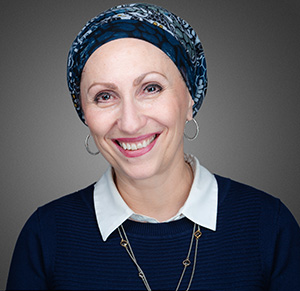The Best Therapy You Can Afford

So many people need therapy. But why is it so unaffordable? And are we compromising on care if we go for cheaper options?
Your teenager always seems sad and withdrawn and won’t get out of bed in the morning. She doesn’t spend time with her friends, she’s often weepy, and her grades are plummeting.
You know she needs help. But here’s the rub: Every therapist in your neighborhood is asking $250 per session, and many have no room in their schedules. None of them accept your insurance.
These days, we hear a lot about a “mental health crisis.” “It’s hard to tell if we’ve had an explosion of cases because a greater percentage of people have problems, or because the frum population has quadrupled in the past twenty-five years,” says Rabbi Binyomin Babad of Relief Resources, which helps frum people find mental health treatment. “There was a big spike in anxiety after Covid, but that seems to be settling. Anxiety and depression are the most common issues, but we also see addictions, eating disorders, OCD, and other syndromes.”
With a staff of 42, Relief deals with 1,300 new cases per month, with 60 to 70 percent of those in the New York metropolitan area. Yet as Rabbi Binyomin Babad points out, “There are thousands who aren’t calling! Very often we find ourselves playing cleanup after things have gotten out of hand."
"It's becoming very hard to get access to qualified, credentialed providers who are educated, licensed, culturally sensitive, community-based, linguistically competent, have openings in their schedule, and are affordable," says Cynthia Darrison, executive director of Nefesh International, the association of Orthodox mental health providers. "In frum areas like New York, Lakewood, and Monsey, you have a better chance of finding help. But there are many other places that are mental health deserts."
What's a person to do?
An Inflated Market
While the need is there, the price tag is a deterrent, especially for those who seek help through private practitioners (who rarely accept insurance) rather than agencies (which usually do).
People may stop treatment if it simply becomes unaffordable, says Sarah Gelbwachs, the executive director of LCSC (Lakewood Community Services Corp), a social services agency. But this may backfire. “People need to stay in therapy until they reach their goals,” she says. “But to get the full benefit it has to be affordable.”
Frum people often gravitate toward private practitioners because they believe they offer a higher quality of care. “We want to see the top person in the field — and then get a second opinion!” quips Dr. Chanania Silverman, executive director of Premium Behavioral Health in Brooklyn. But Tzivy Reiter, LCSW, Director of Clinical & National Trauma Services at Ohel Children’s Home and Family Services, states emphatically, “It’s just not true that cost equals value. I know many people who are very good and more affordable, and some who are very expensive and not as good. It pains me to see so many people going into immense debt because they’re paying such high rates for therapy.”
Rabbi Babad agrees. “It became the Wild West,” he says. “Private therapists say, ‘If I charge less, people will think I’m not good.’ Sometimes, when we want to refer a needy client to a good therapist who charges less, we’ll tell him to say, ‘My usual price is X. But for you, I’ll give a discount.’ Then they’ll think they’re getting somebody ‘top.’ ”
A few weeks ago, one of the therapists at Jewish Family Service in Passaic approached her boss, director Ozer Herzog, to tell him she’d been offered a job in a private group practice, one which doesn’t take insurance. She was only a year or so past earning her degree, and the practice manager told her she had to bill her rate much higher than she was comfortable. “I don’t want to charge that much,” she told him. “I don’t have enough experience. But they tell me no one will take me seriously if I don’t.”
“I’m in the field nearly twenty years, and it used to be that a therapist wouldn’t dream of going into private practice until he or she had gained at least five years of experience working in an agency or medical center,” Mr. Herzog says. “But now some people are going into private practice before they’re even independently licensed.”
“If an inexperienced therapist is charging more than I am, with my almost twenty years in the field, I think it tells you something about the therapist,” Dr. Silverman remarks.
Dr. Isaac Schechter, the founder of Achieve Behavioral Health in Monsey, the largest frum mental health clinic, notes that prices skyrocketed to “ridiculous” levels during the pandemic. “During and after Covid, when there weren’t enough therapists for everyone who needed them, people began charging whatever they wanted. Many people who were fresh out of school and had no experience hung out a shingle and began charging hundreds of dollars.” He feels dismayed when therapists don’t give a discount to tzedakah organizations who are paying for a person’s therapy.
Can’t Insurance Pay?
Insurance companies have made it so cumbersome for private practitioners to obtain reimbursement that most of them don’t want to be bothered. Taking insurance requires a lot of paperwork, and the companies often deny claims or only offer low reimbursement rates. Mental health, unlike physical health, is perceived as a luxury.
Unfortunately, Rabbi Babad says, there tend to be only two classes of private therapists who accept insurance: “The tzaddikim, and the lousy ones who can’t get clients without it.”
In fairness to the insurance companies, a mental health issue is considerably less well-defined than a physical ailment like a broken bone. Insurance companies don’t have clear metrics about how long a treatment will take (and often, nor do the therapists), and they fear that because of this, therapists will take advantage to drag out the therapy.
Recently a few companies have opened, such as Alma and Headway, which handle insurance billing for private mental health practitioners, including group practices. “They will put in claims for people who have one of the top four or five insurances. Of course they take a cut, but their reimbursement rates can be higher than what some social services agencies receive,” Mr. Herzog says.
Relief tries to help clients find lower-cost options, even employing the services of a company that helps clients find coverage and can force insurances to provide coverage for out-of-network providers if there are no comparable in-network providers. That often works with more complicated issues such as eating disorders or personality disorders, since insurers are aware that if they’re addressed early, the client might avoid hospitalization.
The frum community is blessed with many people and organizations with kind hearts and generous pockets who are willing to help cover the cost of therapy for people who really need it. But in order to be sustainable, such tzedakah has to be given in a manner that is targeted and effective.
Clinical Help
For many people, clinics are a more affordable way to get the mental health services they need, because they accept insurance and charge lower rates. “The clinics are full,” Rabbi Babad says. “Some are better than others, but many of them have good people.
“The issue for many people is that you may not get to choose who you see, so you might not get the right shidduch initially. But at some, you may be able to see a good psychiatrist for a twenty-dollar copay. One of my clients was sent to a psychiatrist who billed him fifteen-hundred dollars for the first visit — outrageous!”
The advantages of clinics go beyond the price tag. “In an agency, you have many layers of supervision, training, and oversight,” says Sarah Gelbwachs. There’s a wider circle of care, many layers of support, and a collaborative team approach. Having a large pool of therapists has the added benefit that after completing the intake process, clients can be matched with a clinician who best suits their unique needs.
“Agencies also require their therapists to write up treatment plans with goals and timeframes, keeping everything clearly documented, thereby ensuring that the therapy stays focused and on track.” The emphasis on documentation means that data is available to assess the progress of clients and efficacy of the therapists.
Sarah Rivkah Kohn, founder and director of LINKS, an organization servicing orphaned children and teens, refers many of her clients to therapy. She cautions that “much of the supervision in clinics is actually spent on the paperwork and codes for diagnosis,” though this has improved somewhat over the last decade.
Because of the well-defined treatment plans required in agencies, insurance companies often prefer to reimburse them over private practices.
LCSC, like many frum agencies, has rabbinic oversight. “Our rabbanim have been exceptionally available to answer sh’eilos and make sure we stay halachically as well as professionally on track,” Mrs. Gelbwachs says. “We will work with a client’s rav as well.”
Mr. Herzog adds that clinics are more likely to have ethical oversight and compliance at the organizational level.
Some clients hesitate to come to agencies for fear of being seen by other members of their community. Achieve in Monsey used to provide a sort of booth for people who wished to remain unseen. It’s still there, but these days, no one uses it; therapy has less stigma and people are less self-conscious.
“LCSC has multiple locations, ” Mrs. Gelbwachs says. “We also provide services in schools so children can get help in school without needing separate appointments and transportationafter a long school day. While this is not appropriate for every issue — for example, it’s not optimal for trauma — it works well for treating anxiety and improving social skills, and has the added benefit that the clinician can collaborate effectively with the school staff.”
Agencies generally offer a wide variety of services, such as specialized groups for addictions recovery, for remarried couples, DBT, grief, and even enrichment programs such as Mommy and Me or father-son sports. JFS in Clifton-Passaic includes a career counselor on staff. “Sometimes multiple members of a family need therapy,” Ozer Herzog says. “You could have parents who need couples therapy and individual therapy, and their kids need therapy, too. Imagine paying for all of that privately!”
A therapist who trains at a clinic will be exposed to all ages and types of people, Dr. Silverman says. “You can have a person who wants to be a marriage counselor,” he states. “But maybe that couple has a child who is taking some drugs. If you have no experience with this, you won’t have much to offer, but at a clinic you’ll have supervision and colleagues who might have more expertise. Similarly, if you’re confronted by a potentially dangerous situation, such as a client having suicidal ideation, you can immediately enlist advice as to the best way to react.”
Mr. Herzog believes agencies have an important role in the broader community, because like community schools, they take responsibility to help everyone in need.
Dr. Schechter states, “We have a mandate — religious, ethical, professional, and personal — to bring mental health services into the chareidi community and make them accessible. In the same way a community needs a shul and a mikveh, it needs behavioral health infrastructure.”
Agencies often partner with other community organizations; for example, Achieve is partnered with Hatzolah psychiatric teams to de-escalate crises that otherwise might land people in the hospital.
Herzog and Schechter also underscore that agencies are crucial in the formation of the next generation of therapists. In an agency, newly minted therapists receive supervision from more experienced staff and attend trainings and conferences. “Therapists burn out, but the shelf life of clinicians is longer in agencies because there they find social and professional support,” Schechter says. “The therapists feel part of a chaburah. Private practice can be lonely work.”
In fact, he points out, while many therapists leave agencies with the lure of higher hourly rates, when they strike out independently, they take on expenses they hadn’t paid for in an agency: rent for an office, supervision, training, liability insurance, degree credits. Many therapists, at least initially, opt to remain in agencies part-time while maintaining private hours on the side, reaping the best of both worlds.
Sarah Rivkah Kohn points out that until recently, “Most clinics retained interns and very new clinicians or longer-term clinicians who couldn’t fill enough slots in private practice. Today, many clinics have managed to create a standard where therapists would like to continue to give at least a day a week because they love the trainings, the quality supervision, and yes, the consistent pay. Because whereas clinics seven years ago were reporting paying thirty-five to forty-five dollars a session (and if the client was a no-show… zero charge to them and zero pay to the clinician), today’s clinics are paying a whole lot more than that. Some clinics are paying seventy-five to one hundred twenty-five dollars a session, which is quite a jump from what was, and many are paying for no-shows, too.”
However, consumers should be aware that “clinics carry a mix of clinicians, and while some clinics allow referrals to a specific clinician, some don’t,” says Sarah Rivkah. Her organization, LINKS, doesn’t work with agencies that don’t allow clients to choose their clinicians. “More often than not, it has boomeranged in our faces, with the reason a client is placed with a particular clinician is simply because someone much less capable was available, while a more competent therapist wasn’t. The existence of private practices often allows us to give a much more targeted referral, as opposed to saying: ‘Hmm, if I had to choose from these two therapists with availability at this clinic, which would I choose?
“If you build an agency right — with serious infrastructure — then the people will come,” Dr. Schechter says.
Dr. Silverman notes, “At Premium, we try hard to hire people who seem very talented, so our clients get excellent therapy.”
Private Practitioners
Clients are often drawn to private practitioners because they like the discretion, the sometimes more convenient hours, and their assumption that the therapist is more experienced. “Therapists at agencies tend to be younger, and the clinics have a high turnover rate,” says Dr. Shoshana Friedman, who maintains a private practice. “Although today even young people with little or no experience are starting private practices.”
Dr. Silverman, Mr. Herzog, and Dr. Schechter all recognize that therapists need to provide for their families, so they understand why people leave agencies for the higher rates of private practice. “Sometimes a talented young therapist is pushed into private practice by people in his community,” Dr. Silverman says. “A rabbi or community member will approach him and say, ‘I really need you to work with so-and-so, because they can’t find anyone to see him.’ ”
Private therapists often get a bad rap because of their high rates, but Rena*, an LSCW, protests. “We don’t necessarily make so much money. We don’t have time to see millions of clients, and we often don’t get paid the full amount. If you’re in this for the money, you didn’t choose the right profession!
“Many of us do some of our work pro bono or on a sliding scale, although most therapists don’t like to publicize it. But when clients pay more, they’re often more motivated to accomplish. This avoids prolonging the therapy.” She adds that although she doesn’t take insurance, some of her clients have insurance that allows them to get a receipt and submit it to their insurance company.
Esther*, another LCSW, says her clients who have insurance with out-of-network benefits get reimbursed very well, and she helps them by furnishing billing codes and receipts. But since she’s not good with technical details, she says, “I’d never get paid if I started accepting insurance!”
“My perspective on the cost of therapy in private practice is heavily influenced by two factors,” says Sarah Rivkah Kohn. “I have to raise five-hundredK-plus a year toward cost of care for LINKS. And that’s low! Many of our teen clients have their therapy subsidized by nonprofits like Keren Ezer L’Nefesh or Ahavas Chaya. So yes, I care about the cost of therapy a lot. The other hat I wear is the wife of a clinician who feels like there’s no way my husband is charging enough for the energy it takes to do this work and for the costs involved in maintaining a private practice.
“Lately, private practice therapists have been made out to be money-hungry folks. In my experience, nothing is further from the truth. They’re hardworking individuals who do their best to set fair prices commensurate with the work they’re doing. Unlike pediatricians who can see ten children in an hour, clinicians are expected to give the ‘therapy hour’ and see one client in that time.
“Are there clinicians straight out of school charging two-hundred-fifty-plus dollars? Yes. I fault their supervisors for that. Or the owner of the group practice they’re part of. Yes, maybe the senior clinician takes three-hundred dollars, but the newbie should be at least fifty percent less.”
Higher hourly rates are not the only reason so many therapists leave agencies for private practice. “It’s more flexible,” Rena says. “I worked in an agency myself for six years, and it was a great experience. I got amazing training, collaborating with psychiatrists and psychologists. But in the agency, I had to follow certain rules, like working some evenings or maintaining a full schedule of clients. That left me no time to breathe.”
Similarly, Dr. Friedman says private practice allows her not only family time but the freedom to teach master’s-level students and run group therapy sessions.
Esther likewise enjoys the autonomy of private practice, being able to manage her own schedule and do what really interests her. After four years in an agency, she took on one private client and slowly built up over a decade until she went completely private and gained the experience necessary to take on more difficult cases: “I started with anxiety and social skills, but now I can handle personality disorders and abuse.”
She has to keep her own records, manage her own business, and pay for training and supervision. “It’s not possible to take more than twenty to twenty-five clients a week, because you need to leave time to manage your business, get supervision, and breathe in between clients,” she says. “I also have no benefits like paid sick days or vacation days.”
“It’s not an easy profession,” Rena avows. “You have to give each client your full concentration and remember everything about them. I remember a client once got upset because I forgot her cat’s name! It’s quite easy to burn out.”
“Private practice can be lonely, and it takes a high emotional toll,” Esther says. “When you have very difficult, dangerous, or toxic clients, there’s no built-in support.”
“Burnout is high in this field,” says Sarah Rivkah. “Therapists charging less are often taking lots more clients. And even those charging fair prices are dealing with a lot and exhausted easily. Because this work is hard. At some point, you watch therapists move on from taking on one-on-one clients. They begin to teach, to supervise, to lead clinics, to explore other areas that don’t require hours of direct clinical work. It’s the nature of this field and it’s a reality that needs to get factored in.”
Is Your Therapy Working?
A
fter all the time and money therapy involves, how do you know it’s working? Abigail Shrier warns in her bestselling book, Bad Therapy, “An embarrassing number of psychological interventions have no proven efficacy.”
Or the change may be coming from somewhere else. “We rarely track objective markers, for example, the state of our career or our relationships,” Shrier says. “Sometimes when our lives improve, it’s not because the therapy worked but because the motivation that led us to start therapy also led us to make other positive changes.”
Yet many therapies do have a proven track record and recovery schedule. “For certain conditions we know what are effective treatment models, although it varies for every individual,” says Tzivy Reiter of Ohel. “Most people who are getting therapy and medication for depression should see some alleviation of their symptoms within a few months. We have a parental stress index we look at over the course of treatment, for people who come to get help for their parenting, which measures many variables, including how stressful they find the parenting role. We get reports from schools about how well a child is functioning with the parents’ signed consent. It’s best practice to periodically check in with the people most important in a client’s life, especially when the client is a child.
“In some cases, like trauma, a person may get worse before getting better. There may be some regression as painful experiences are recovered. But this should peak and then you would want to see a trajectory of improvement. The point is that it is helpful to have some objective measure to quantify improvement, to hold oneself accountable.”
A person seeks therapy because he isn’t functioning well and/or is in distress, Dr. Silverman says. “If he’s feeling and functioning better, then therapy is helping.”
Rena, a LCSW, relies on supervision to make sure her clients are progressing rather than stagnating. At the end of a session, she’ll often ask, “Was this helpful?” and checks in every few months to ask, “Are we in the same place we were a few months ago?” When necessary, she will refer clients to a psychiatrist, and sometimes brings in a client’s children or parents to observe the family system in action.
Dr. Shoshana Friedman sets goals with her clients at the beginning, and they periodically review their progress. “We should eventually see changes in a person’s ability to self-regulate, in his thought patterns and self-awareness, his relationships, and his ability to handle challenges,” she says.
Mr. Herzog notes there are scales for syndromes like anxiety, depression, and PTSD. At JFS Clifton-Passaic, clients fill them out on a regular basis to measure progress. But he acknowledges that timelines are tricky, because a presenting complaint may mask a deeper issue. He cites the example of a person who came in for anxiety, but as the therapy progressed and the anxiety didn’t resolve, it emerged that the client had been the victim of abuse. Nevertheless, as Mrs. Gelbwachs notes, “In the meantime, someone like that can learn skills to help them cope better with everyday life.”
Dr. Schechter warns that while it’s important to create a bond of trust and empathy, therapy should not be a free-floating, undirected substitute for friendship. There needs to be goals and a treatment plan that push the client to move forward within a reasonable time frame. “It’s easier to give validation to a client than to challenge him,” Dr. Schechter says, “but in the long run it only keeps him trapped.”
Similarly, Dr. Friedman cautions against therapists who encourage a victim mentality in their clients. “It gives them validation, but it doesn’t move the client forward, prolonging the therapy,” she says.
When it comes to children, almost all therapists agree on the absolute necessity of parental involvement. “Successful outcomes are more likely when parents actively engage in the therapy process, working collaboratively to support their child’s growth and progress,” Mrs. Gelbwachs says. “Seeing positive growth in their children often inspires parents to recognize how they, too, could benefit from therapy, leading them to explore available services for themselves. For example, anxious children often have anxious parents, and you can’t help the children’s anxiety without helping their parents.”
An often-serious flaw of all one-on-one therapy is that it does not give the therapist a broader picture of the client’s life. Breindy*, whose daughter cut her off after she saw a therapist who suggested their relationship was “toxic,” feels that she was condemned without trial or jury, and wishes the therapist had asked for her point of view.
Iatrogenesis — creating harm through an intervention — is likewise a risk. Shrier’s Bad Therapy cites studies which have found that while therapy is often helpful, it may produce harm in up to 20 percent of patients. Therapists may misdiagnose, or intentionally or unintentionally alienate family members from each other without recognizing the broader context and seeking resolution. As the Novominsker Rebbe once declared in a meeting Mr. Herzog attended, “The only thing worse than no therapy is bad therapy.”
Rabbi Babad’s Relief documents the outcomes of its referrals, and keeps records as to which therapists are effective and which are not. Clients depend on Relief’s expertise, and the organization feels responsible to recommend only therapists with a good track record. Agencies that receive government funding are also obligated to document all their work and track clients’ progress.
Fortunately, there is more cause for optimism than the opposite. “The good news is that people are getting help,” Rabbi Babad says.
As much as we hear about a “mental health crisis,” Dr. Schechter says, today help has become available and accessible. “Baruch Hashem, when you look at the big picture, we’re doing pretty well,” he says. Even better, helping one Jew creates a communal ripple effect.
Rabbi Babad concurs. “I had a person in chinuch come in two years ago because he was depressed. He went to therapy, and it really helped him. But when I ran into him recently, he told me, ‘Therapy was life-changing, but not just for me! It helped my wife, it helped my kids, and it helped my talmidim!’ ”
Be an Educated Consumer
A
fter a tragic mental health incident in Lakewood last year, Nefesh International took out an ad in the Lakewood Voice, urging people to seek help if they need it, and listing criteria they should look for such as a master’s oe doctoral degree, licensing, experience and supervision, and rabbinic access. “Don’t hesitate to ask about these standards,” the ad said. “You deserve the best outcome.” Cindy Darrison, executive director, says that people can ask their doctor, rav, or a mental health referral service to find them a reputable therapist. A person goes to a therapist because the therapist has greater knowledge of techniques for healing than a friend or family member. But this does not make the therapist omniscient. Hence consumers of therapy services should trust their instincts and reactions.
“Therapists have acquired a certain cachet in our community, almost adjacent to a rabbi,” Dr. Schechter says. “Some people suspend their judgment and critical thinking when they come into therapy. But please keep these points in mind: 1) You have the right to disagree with your therapist; 2) You have the right to educate yourself, and ask yourself if you feel you’re making progress — client and therapist should be open to learning from each other; and 3) You should never feel uncomfortable with your therapist, although the occasional confrontation can lead to resolution.”
In Bad Therapy, journalist Avigail Shrier describes how she sought therapy after moving cross country to follow her fiancé. When the therapist told her, a month before her wedding, “I’m not sure you two are ready to get married. We may need to do a little more work,” she balked, despite her respect for the therapist and their good relationship. Shrier had the self-confidence to push back and say, “I don’t agree, and I don’t need your permission.” (She got married and is still married.) But she points out, “Children and adolescents are not equipped to say these things. The power imbalance between child and therapist is too great.”
The same imbalance can exist even with adult clients. Dr. Schechter once saw a case in which a therapist told a depressed young woman that she should drop out of school and end the promising shidduch she’d started. “I thought that was crazy and said so,” he said. “Why should she give up on her future? Why should she abandon all the structure in her life to lie around at home? There were better ways to handle it.”
He warns against “guru-ism” and fads in psychotherapy. Sometimes a new fashion comes into vogue — say EFT, IFS, or trauma therapies. While they may be useful, some psychotherapists may jump on them and promote them as a cure-all. “But if everything is seen as trauma, then nothing is trauma,” Dr. Schechter says. “A new therapist who has learned a fashionable modality may become excited about it, and use it to create a certain cachet for himself, when he or she has not yet mastered the alef-beis of standard therapy.
“A therapist needs a healthy dose of humility and sense of his own limitations. We sometimes have to admit that not everything can be therapized away.”
Taking Agencies to the Next Level: The CCBHC Model
The gold standard for mental health agencies today is to become a CCBHC, or Certified Community Behavioral Health Clinic. CCBHCs were established in 2021 by the federal government as a result of the Excellence in Mental Health and Addiction Treatment Act, which aimed to provide community care for a broad range of mental health issues, authorizing higher levels of reimbursement for insurances such as Medicaid. “The federal government realized it was important to build up resources in community agencies,” Sarah Gelbwachs says. There are currently 500 of them in 46 states, and 13 in New York, including Ohel, Ezra Medical Center in Brooklyn, and Achieve in Monsey, which was one of the first agencies to get certified. “It’s a lot of work to attain this status, but it’s worth it,” Rabbi Babad says. “The government reimburses at a higher rate, so you can attract better clinicians. Patients can see a psychiatrist for a twenty-dollar copay!”
CCBHC clinics have a mandate to provide or contract with designated collaborating organizations (DCOs) to offer nine types of required services, making them a one-stop shop for mental health services. These include crisis management with 24-hour teams, screening and diagnosis, treatment for mental health and addictions, health screening, psychiatric services, and peer and family support services.
The CCBHC model has enabled Ohel to have a DBT program and specialized treatment tracks for substance use disorder, gambling disorders, perinatal mood disorders, and common childhood behaviors such as aggression, ADHD, and anxiety. Achieve even has a clinic for eating disorders and women’s health issues, which include therapy for infertility, pregnancy loss, and postpartum depression, with a reproductive psychiatrist on staff. It partners with Hatzolah to de-escalate psychiatric crises and avoid hospitalizations whenever possible.
Catching Them Early
Twelve years ago, Rav Chaim Epstein ztz”l began an organization that discreetly pays half the cost of focused, issue-oriented therapy for teens and young adults who need to get over a hump before launching into adult life. Often, finding help for people while they are still young, can go a long way to preventing deeper issues down the road.
The Keren operates as a school-based program and is limited to young people of high school/mesivta or seminary/beis medrash age. Cases come in through a rebbi, teacher, principal, or school social worker who see that a child is struggling emotionally and his parents who cannot afford the intervention. Once the school and the parents are on board, and the therapist is able to offer a treatment plan as well as ongoing oversight and feedback, they work with issues like addictions, behavior issues, and spiritual struggles. Keren has relationships with 100s of affiliated schools and with more than 1,300 mental health professionals that accept their payments, and has seen a dramatic rise in requests as therapy prices have become more unaffordable for the average family.
Relief helps the organization find good clinicians who are vetted to make sure it’s a good shidduch, as you wouldn’t assign a therapist whose specialty is anxiety to a person with an addiction.
Keren is happy to be able to provide focused, issue-oriented therapy for young people who need to get over a hump before launching into adult life. “It’s really the best possible situation,” Keren’s director says, “because these kids are already in school and functioning, the parents are on board, and the school gives us feedback and support.”
But the therapists they refer to are usually private ones. “The teen population is very resistant to going to a clinic,” the director says. “We don’t negotiate prices with therapists, but we do encourage parents to negotiate a special rate when necessary.”
(Originally featured in Family First, Issue 938)
Oops! We could not locate your form.







